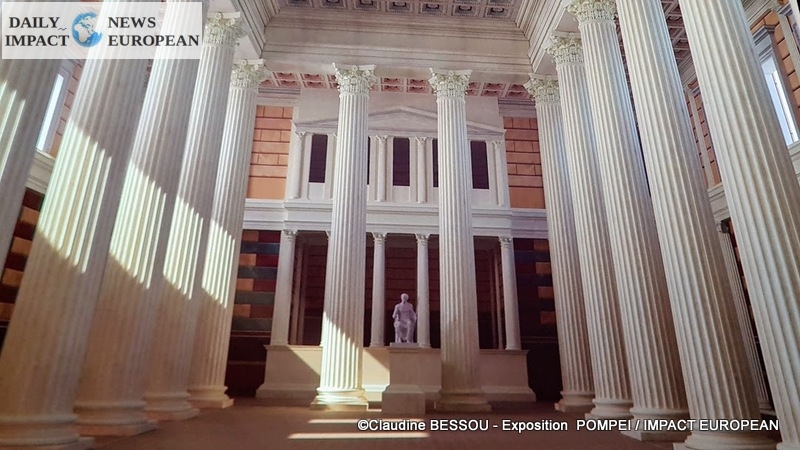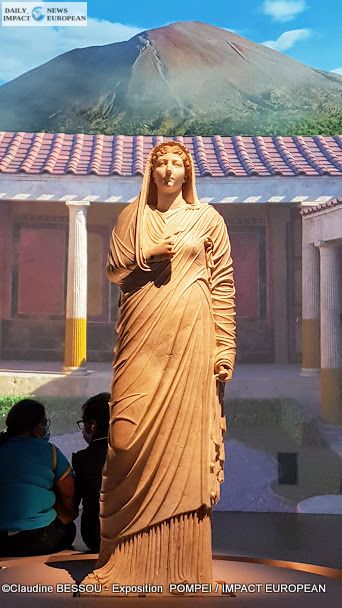The Grand Palais presents a walk through the heart of the legendary city of Pompeii in the days of its glory and sparkling splendor. The volcanic eruption in AD 79 interrupts and freezes the life of Pompeii, which flourished under the rule of Rome thanks to its trade and its productive lands. The ancient city of Pompeii founded at the beginning of the 6th century following the reunification of several villages of the Osques, an indigenous people under the control of Etruscan groups, became a Roman colony under the name of Colonia « Veneria Cornelia Pompeianorum ».
In everyday life, banquets occupied an important place in the social organization among the upper layers of the population. They were an opportunity to forge or consolidate economic or political ties. The dishes and food were more or less valuable depending on the resources of the household. Terracotta amphorae were used for transporting foodstuffs. Their shape of a large tapered vase with two handles facilitated their handling. These containers contained oil, wine, beer, dried fruits …
From food to jewelry, a taste for gardens, to fountains along the streets, the life of the Pompeiians is effervescent. Under the influence of large Greek mansions and the delight of gardens, the houses are adorned with sculptures, fountains and hedges. The rooms open onto large green spaces where art is used.
The Roman woman paid great attention to body care and beauty. Makeup and hairstyles were carefully selected to show off perfectly. Clothing in fine fabrics was complemented by luxurious accessories, gold jewelry and precious stones like emerald and pearls.
The practice of slavery was common in ancient times. A slave could work in a skilled trade and be considered almost a member of the family. Under certain conditions, depending on the social status and character of his master, he had the possibility of conquering his freedom.
Pompeii or the tragic fate of a city in the year 79 of our era. Vesuvius erupted and poured pumice, gas and ash on Pompeii from a height of thirty-two kilometers in the sky. According to « Pliny the Younger » in a letter to the historian « Tacitus », a series of earthquakes occurred in the days preceding the disaster, without worrying the communities living at the foot of the volcano. Residents did not understand what was happening until the time of the eruption.
Since the discovery of its ruins Pompeii fascinates. Archaeologist or visitor, everyone rediscovers their history as testimonies of arrested lives. The objects in the exhibition are in part the result of new research that has been launched in recent years as part of a major project to secure the unexplored excavation area of Pompeii.
Extension until September 27, 2020
https://www.grandpalais.fr/fr/evenement/pompei
Big palace
3 avenue du Général Eisenhower
75008 Paris
Every day (except Tuesday) from 10 a.m. to 8 p.m. and at night until 10 p.m. on Wednesday
Share this content:
















Plus d'histoires
Private Health Schools Under Scrutiny: Council of State Sides with the French Order of Physiotherapists
Dordogne: Mayor Excluded for Antisemitism Avoids Trial, LICRA Reacts
Berlin, Strategic Crossroads: Ukraine, European Security, and the Peace Economy